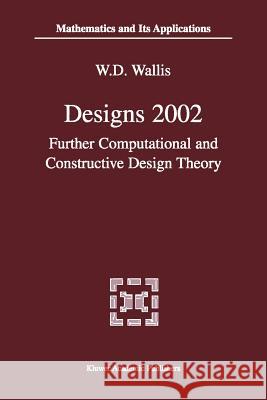Designs 2002: Further Computational and Constructive Design Theory » książka
Designs 2002: Further Computational and Constructive Design Theory
ISBN-13: 9781461379584 / Angielski / Miękka / 2012 / 368 str.
Designs 2002: Further Computational and Constructive Design Theory
ISBN-13: 9781461379584 / Angielski / Miękka / 2012 / 368 str.
(netto: 186,54 VAT: 5%)
Najniższa cena z 30 dni: 192,74 zł
ok. 20 dni roboczych.
Darmowa dostawa!
This volume is a sequel to our 1996 compilation, Computational and Constructive Design Theory. Again we concentrate on two closely re lated aspects of the study of combinatorial designs: design construction and computer-aided study of designs. There are at least three classes of constructive problems in design theory. The first type of problem is the construction of a specific design. This might arise because that one particular case is an exception to a general rule, the last remaining case of a problem, or the smallest unknown case. A good example is the proof that there is no projective plane of parameter 10. In that case the computations involved were not different in kind from those which have been done by human brains without electronic assistance; they were merely longer. Computers have also been useful in the study of combinatorial spec trum problems: if a class of design has certain parameters, what is the set of values that the parameters can realize? In many cases, there is a recursive construction, so that the existence of a small number of "starter" designs leads to the construction of infinite classes of designs, and computers have proven very useful in finding "starter" designs."











